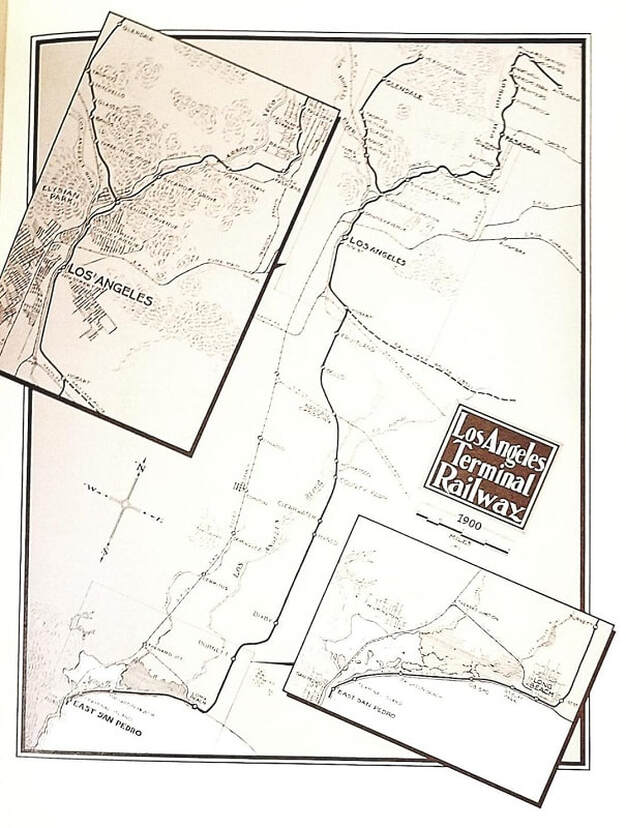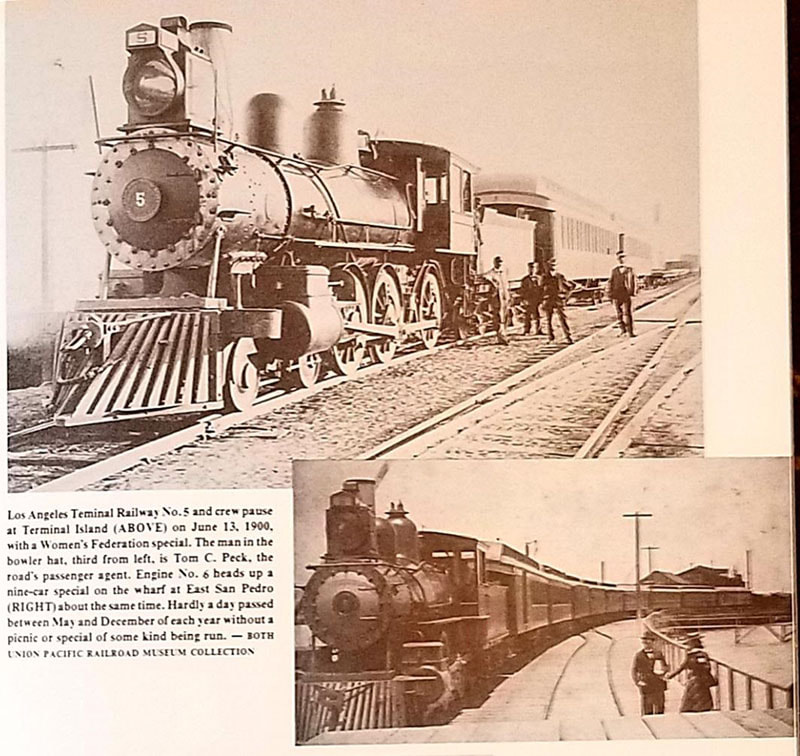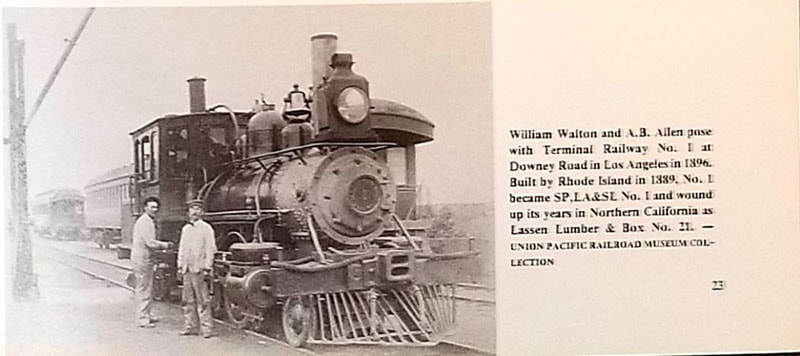Railroad Nails Project Part 2
At the southwestern end of the Old Spanish Trail railroads were also being built. As early as 1861, Murray Morrison and Abel Stearns obtained a franchise for a railroad line from Los Angeles to San Pedro port. But due to the Civil War, the financial support promised by eastern capitalists evaporated forcing them to scrap their plans.
One of the pioneers of freight haulers in Southern California, Phineas Banning, who owned and operated a stage and freight line from Los Angeles to Wilmington, laid the groundwork that evolved into and eventually became the Los Angeles & San Pedro Railroad. On February 18, 1868, bonds were issued and financing was secured and a charter was issued for the Commencement of building the railroad. The road was completed in 13 months and on October 26, 1869, Wilmington and Los Angeles were connected by rail and Southern California had its first operating railroad.
In 1872, the Southern Pacific Railroad acquired Banning’s holdings to facilitate bringing its own main line into the city. On December 4, 1874, the Los Angeles & San Pedro was merged into the Southern Pacific system. The Southern Pacific was working at this time on building from the north and entered Los Angeles through Soledad Canyon, linking San Francisco and Los Angeles on September 6, 1876. During this time the Southern Pacific was at work building its line through Arizona Territory, New Mexico Territory and Texas to New Orleans and completed the project on January 12, 1883.
One of the pioneers of freight haulers in Southern California, Phineas Banning, who owned and operated a stage and freight line from Los Angeles to Wilmington, laid the groundwork that evolved into and eventually became the Los Angeles & San Pedro Railroad. On February 18, 1868, bonds were issued and financing was secured and a charter was issued for the Commencement of building the railroad. The road was completed in 13 months and on October 26, 1869, Wilmington and Los Angeles were connected by rail and Southern California had its first operating railroad.
In 1872, the Southern Pacific Railroad acquired Banning’s holdings to facilitate bringing its own main line into the city. On December 4, 1874, the Los Angeles & San Pedro was merged into the Southern Pacific system. The Southern Pacific was working at this time on building from the north and entered Los Angeles through Soledad Canyon, linking San Francisco and Los Angeles on September 6, 1876. During this time the Southern Pacific was at work building its line through Arizona Territory, New Mexico Territory and Texas to New Orleans and completed the project on January 12, 1883.
Railroads jealously guarded their right-of-ways and what they considered their domains. The head of the Southern Pacific Railroad, Collis P. Huntington, was aware of competition from the Atchison, Topeka & Santa Fe RR and Union Pacific RR as they were both showing interest in expanding their own operations into and through Southern California and threatened to build a line from there to Denver. The AT&SF owned two franchises already operating in the area, the Atlantic & Pacific and California Southern, but had plans to build its own line and expand its operations throughout Southern California. Huntington and his Southern Pacific was determined to Block the AT&SF and keep them from obtaining a foothold in California.
The AT&SF pressed ahead despite fierce opposition and opened a line from San Diego to Colton on August 21, 1882. They then continued building and entered San Bernardino on September 13, 1883, and finally finished building a line through Cajon Pass to Waterman Junction (modern day Barstow). At the same time two other AT&SF franchises, the California Central and Los Angeles & San Gabriel Valley Railroads, were building lines into Los Angeles completing the work on May 7, 1887. Huntington initially blocked the Santa Fe’s Atlantic & Pacific at Needles but finally relented realizing that he couldn’t stop them. He agreed to lease the Mojave - Needles segment of the Southern Pacific to the AT&SF in exchange for right-of-ways they owned in Mexico. The first AT&SF through train entered San Diego from the east on November 17, 1885.
The AT&SF pressed ahead despite fierce opposition and opened a line from San Diego to Colton on August 21, 1882. They then continued building and entered San Bernardino on September 13, 1883, and finally finished building a line through Cajon Pass to Waterman Junction (modern day Barstow). At the same time two other AT&SF franchises, the California Central and Los Angeles & San Gabriel Valley Railroads, were building lines into Los Angeles completing the work on May 7, 1887. Huntington initially blocked the Santa Fe’s Atlantic & Pacific at Needles but finally relented realizing that he couldn’t stop them. He agreed to lease the Mojave - Needles segment of the Southern Pacific to the AT&SF in exchange for right-of-ways they owned in Mexico. The first AT&SF through train entered San Diego from the east on November 17, 1885.
Residents of Los Angeles believed that the Union Pacific Railroad would eventually build into their city so two capitalists, George B. Leighton and Richard C. Kerens, organized the California Improvement Company on June 6, 1890 with the express intent to develop a network of terminal railroads and facilities and “to lease them to larger railway systems.” Leighton also happened to be a director for the Union Pacific. Throughout the 1890’s, the California Improvement Co. acquired several local railroads in and around Los Angeles. Namely the Los Angeles, Pasadena & Glendale, the Los Angeles & Glendale and the Pasadena Railway Co.
This consolidation of local lines was organized into the Los Angeles Terminal Railway Company with George B. Leighton, William H. Workman, T. B. Burnett, Daniel McFarland and T. E. Gibbon as directors. The Los Angeles Terminal Railway acquired the bankrupt Los Angeles & Ocean Railroad and its right-of-way from Los Angeles to Long Beach and the Long Beach & Alamitos Bay Railway in July 1891. Soon after this they began buying land in San Pedro harbor with the intent to construct a wharf, and by way of the franchise they owned from the defunct Los Angeles & Ocean they built a line from Los Angeles to San Pedro harbor.
They eventually bought the Salt Flats, Rattlesnake Island, which was later named Terminal Island, and Inner Bay which were key parcels of real estate that they needed to carry out their plans. The Island along the bay was known as one of the safest and finest beaches along the Southern California coast and was frequented by well known society. Fine beach homes, two beach hotels, the Terminal Tavern and Brighton Beach were highlights of the bay.
San Pedro harbor was one of the best deep water ports along the coast and the LATR was quickly moving ahead to develop their property. Huntington wasted no time in trying to deal with this competition by hastily settling up a rival port at Santa Monica. A nasty fight broke out in Congress over federal appropriations for harbor development along the California coast. George B. Leighton and company won the battle and San Pedro harbor was eventually chosen as the favored location and work finally commenced in April 1899 to build infrastructure.
The Southern Pacific was powerful and had allies along with the California state government in its pockets. As the Terminal Road began operations and was attempting to provide services to the citizens and businesses of the area, the Southern Pacific tried exercising their muscle by blocking franchises from operating, even to the point of building one of their lines directly across the grade of a Terminal right-of-way and stopping their progress in its tracks (no pun intended). But despite the bullying tactics employed by Huntington and his cronies, the LATR prevailed and soon became a successful and prosperous enterprise with passenger and freight services booming.
The primary goal of the LATR, with Thomas E. Gibbon in the lead, was to try to secure financial backing to build a line from the Terminal properties and San Pedro harbor straight through to Salt Lake City. This is the point at which the fight for the route and attempts to block its construction get interesting and quite aggressive.
The primary goal of the LATR, with Thomas E. Gibbon in the lead, was to try to secure financial backing to build a line from the Terminal properties and San Pedro harbor straight through to Salt Lake City. This is the point at which the fight for the route and attempts to block its construction get interesting and quite aggressive.






